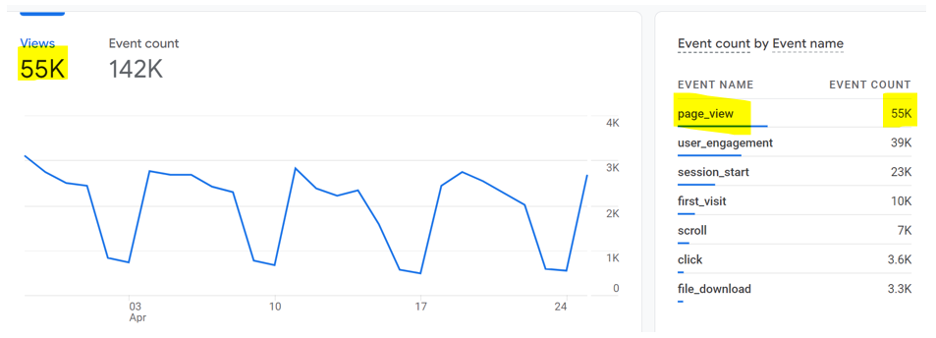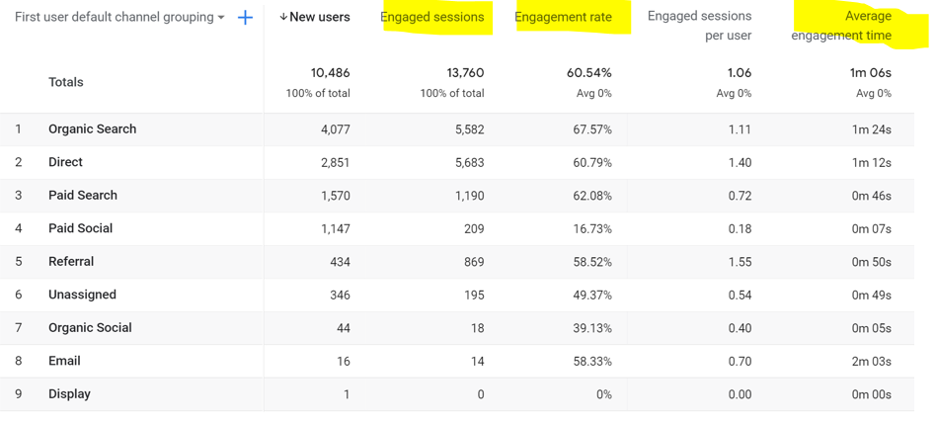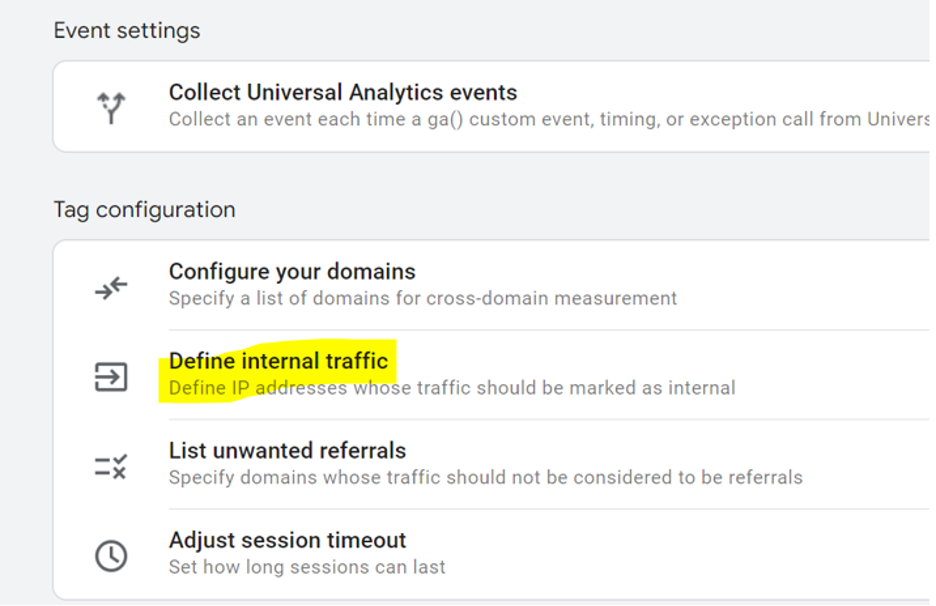10 Practical Differences between Google Analytics 4 and Universal Analytics
Justin Stauffer Digital Direct Marketing, Marketing Analytics, Response MarketingYou may have heard Google Analytics is getting a MAJOR makeover. If not, and you do any form of digital marketing, you’ll want to follow this closely.
Google made the announcement official a few weeks back. On July 1, 2023, an estimated 30 million marketers will be forced to change to Google Analytics 4 (GA4) from Universal Analytics (UA, aka Google Analytics 3).
By that date, your data will stop recording entirely within UA. The marketing industry (me included) took a deep breath at this big announcement. What’s the big deal? It’s just an upgrade, right?! Well, not so fast.
At its core, the new GA4 is not really an “upgrade” to UA. It is a fundamentally different analytics platform!
Fortunately, savvy agencies (hopefully yours!) have taken steps to get way ahead of the change. Here at DMW, we’ve been using both analytics platforms for nearly a year in anticipation of the pending changes. With GA4, there is plenty to love:
• The app and web data are totally integrated.
• You get greater flexibility for segmenting data.
• The reporting is visually stunning.
But GA4 definitely is not without a learning curve! I’ve been using UA since the platform was originally purchased and rebranded from Urchin in the mid-2000’s. Nearly two decades later, it’s going to be hard for me to simply shift away from UA.
While so much could be written about GA4 (and DMW likely will in the future), in this post I offer a breakdown of the key nuances of the two platforms. Note: Some of the following information is technical, but I’ll do my best to clearly outline why these changes are significant.
Let’s get going …
Well, for starters, the way data is modeled is fundamentally different. GA4 uses “event-based tracking” at its core. UA, on the other hand, relies primarily on “session-based tracking.”
Events vs. Sessions. So, what’s the difference? Simply put, “events” are individual interactions that a user has taken. Within GA4, all data, regardless of type, will be measured as an event.
A “session” on the other hand is a group of interactions that occur during a given visit to a site. This primarily includes data based on pageviews, but it also includes other events, social interactions, and even purchase transactions. Sessions are actively capturing data while someone is on a website as long as they are not inactive for a period of 30 minutes. (GA4 removes this period of inactivity, BTW.)
While UA can also measure event-based tracking, this method of tracking is reserved (out-of-the-box at least) for interactions such as button clicks and file downloads. On the converse, while GA4 can continue to measure pageview data, the pageview metric will now be listed as a “view” and registered as an “event.”
GA4 will also allow cross-device tracking of website + native mobile apps — a longstanding issue with UA unless you connect with tools like Firebase. Now, the result is more granular, viewer-centric data capable of reaching across devices.

Example: Event Count Report (GA4)
No (thankfully!). GA4 allows for automatic tracking of events without any additional coding or implementation within Google Tag Manager (GTM). The following event types are automated: outbound clicks, scroll depth, site search, video engagement, and file downloads. This was not possible within UA, and it took an unnecessary amount of time to configure. Custom events beyond those already mentioned will still require coding or GTM integration.

Data stream setup (GA4): Enhanced measurement options
Because of the change in data measurement, it will be challenging to compare the data found within the two platforms. There will most likely be anomalies in historical data between GA4 and UA.
For these primary reasons, DMW has ensured that we have both platforms implemented on websites and landing pages that we directly manage. Data will not backfill from UA into GA4. The two platforms will be completely independent of each other. The bottom line: You want to ensure that you have as much historical data available prior to the changeover deadline on July 1, 2023.
Yes and No. Many of the metrics that we are accustomed to will be available. However, because GA4 is not session-based, once-key metrics, like “bounce” and “bounce rate,” will no longer be accessible. But don’t panic. The new GA4 platform will introduce three new metrics as replacements, which IMO are more useful:
Engaged Sessions: How many user sessions lasted longer than 10 seconds, had a conversion-related event, or had greater than 2 views.
Engagement Rate: The % ratio of engaged sessions to total sessions.
Average Engagement Time: How much time a user spent actually interacting with a page — this could include scrolling through the page or clicking on a link.

Example: Traffic acquisition by channel (GA4)
Yes, “custom views” of reporting are going away. Okay, admit it: how much did you really use them in UA?
They were time consuming to create and rarely provided greater insights than UA’s standard reports. To be honest, the only time I ever relied on them is when I wanted to mash together two or more data points not found together within a standard report.
GA4’s beefed up “Explorations” reports will allow you to visualize data in more meaningful ways. With them, you can create many different types of truly stunning visual reports.
I see the most potential in two of them: 1. “funnel reports” which provide a more detailed view of a visitor’s journey; and 2. the path analysis feature (called “path exploration”) which helps determine the most common paths a visitor takes on your site or app.
Google also features a “Template Gallery” where you can also select from a series of other custom and visually stunning reporting (yes, I said “stunning” again because this new platform really does deliver in that regard).

Example of Explorations in GA4
Historically, when analyzing UA data at DMW, we typically include multiple views within each property. Minimally, we’d include an “unfiltered” view that contains all data from every user (including our clients and DMW staff). We’d also include a “filtered” view, which removed specific IP addresses from DMW and our clients.
GA4 has removed the notion of views entirely. However, you do still have the option of creating multiple data streams within the admin console. Google goes into a fair amount of depth regarding this process here.

GA4 Tag configuration options
Unlike third-party cookies, first-party cookies are not going anywhere — at least for now. So with a lessening dependence on third-party cookies (thanks in part to mobile devices, which do not use them) and increasing privacy-related legislation (like CCPA and GDPR), Google needed to make some fundamental changes to how tracking is handled.
UA relies entirely on cookie-based tracking. While the GA4 platform will also utilize cookies (if available), the platform can also use a mix of statistical modeling, machine learning, and “Google Signals.” What the heck is that, you ask? It’s data that passed through to GA based on users who are browsing while signed into their Google Accounts and have “ad personalization” enabled.
Modeling is becoming increasingly necessary within GA4. Even if privacy consent is not provided (more on that later), Google’s algorithm will attempt to fill in the missing pieces of the puzzle as much as possible. Google cites several examples where modeling is necessary within GA4:
Browsers that don’t allow conversions to be measured via third-party cookies.
Browsers that limit the time window for first-party cookies.
When privacy consent mode is utilized, conversions are modeled for those that are unconsented.
Conversions whose ads originate on iOS and are impacted by Apple’s App Tracking Transparency (ATT) policy.
When ad interactions result in conversions occurring on a different device.
Conversions from linked GA4 properties and imported into Google Ads.
As we’ve written before, privacy concerns continue to be a hot topic within digital media. In response to a changing industry and recent legislation, Google just released a privacy consent mode in GA4 in April 2022. This newly released feature is able to allow analysts to adjust what data Google tags collect based on user consent.
While UA had similar features, it simply ceases to store data at all if consent is denied. GA4 will store data but it will be completely anonymized. Without question, this feature shows that Google is taking privacy considerations to the next level.
Despite all of the positives we’ve seen with GA4, the platform is certainly not without its flaws. In fact, I could probably write a full blog post just about some of the downsides. A quick summary of the least you’ll want to know:
The new interface definitely takes time to get familiar with — the new UI looks vastly different from UA.
Some standard metrics are being phased out — I like that “bounce” metrics will be replaced with more detailed engagement metrics. However, they are not the same, which means your historical analysis will require an extra step to convert.
It currently lacks integration with several third-party tools that work flawlessly with UA.
Real-time data, only a few minutes behind within UA, is now at least 30 minutes behind — not a huge issue but definitely a thorn.
Migration from UA to GA4 is also a huge hassle. Goals (now called “Custom Conversions”) need to be recreated within GA4. (In my opinion, this last point appears to be mostly resolved after Google rolled out a migration tool for moving from UA to GA4.)
Start making plans now to make the jump to GA4. Making the changeover to GA4 may sound intimidating, but it doesn’t need to be. As of this writing, you have over a year to prepare for transition. As a first step, educate yourself more deeply using the plethora of resources online.
And second, talk with an expert like DMW. We’re well-versed in all things digital, including Google Analytics. We’re ready to help you jump on it as quickly and painlessly as possible!